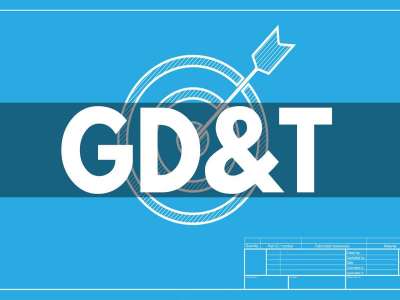GD&T: Reduce Manufacturing Errors and Revamp Quality

When utilized in product design and commerce, geometric dimensioning and tolerancing (GD&T) opens lines of communication between manufacturers, suppliers, and buyers. Realizing the effectiveness of geometric measurements, Stanley Parker 1938 first originated the GD&T system by developing the concept of ‘’True Position’’ while working in the royal munition factory. In addition, the British Standards Institution (BSI) and the American Society of Mechanical Engineers (ASME) released the first standard document pertaining to geometric dimensioning and tolerancing in 1943. Only GD&T is capable of handling the geometry of machine components flawlessly. Noe GD&T is universal worldwide use this. Using standards of GD&T in technical mapping allows designers to discuss its technical features and tolerances. In addition, the inclusion of geometric dimensioning and tolerancing specifications in your drawings will let the viewers better understand the purpose of every part. In this writing, we will elaborate on GD&T, a quick guide to the symbols of GD&T, and why you should prefer GD&T.
In GD&T, we clearly and accurately explain the tasks. It illustrates the component by its intended use or assembly circumstances and provides instructions on making and testing it. This ensures that finished passageways have the necessary form, fit, function, and interchangeability.
A Prompt Guide to Symbols of GD&T:
Each of the several symbols used in GD&T describes the kind of tolerance and dimension that mechanics will verify. These symbols come in the following categories:
These tolerances describe the tolerance for the orientation of particular features with respect to the datum. A part will manage shape if orientation tolerances are applied to the surface.
Tolerances for location:
The tolerances connected to linear dimensions are controlled by location tolerances. Additionally, it includes the location of the building.
Runout Tolerances:
These tolerances control the runout fluctuation of a structure when the part is moved along the axis. Circular runout controls the roundness of individual cross-sections of a feature. Runout tolerances are usually applied to rotating parts because any significant eccentricity relative to the axis of rotation can cause unwanted vibration.
Form Tolerances:
Form tolerances govern how features will be shaped or structured.
Advantages of GD&T:
Manufacturers need to know how a particular part will be used to produce the best version of that component. Following are some critical advantages of geometric dimensioning and tolerancing.
Explicit Information:
Accurate and reliable communication is essential for translating complicated designs physically. Accepting GDT may cause more high-yielding interactions between designers, developers, and quality-guaranteed teams while saving them time and money.
Uniformity.
The alphabetic language of GDT can be acknowledged and used by individuals. To Sum-up, it is cost-effective to ensure that every qualified engineer will be acquainted with the jargon as termed above. By analyzing GDT vocabulary, we can ensure that all stakeholders acknowledge the geometry expressly.
Advanced Functionality:
Explicitly elaborating all design requirements ensures the accurate fulfillment of dimensional and tolerance details relating to the parts.
Reduction of Cost:
To sum up, GD&T has simplified matters by raising both dependability and quality. Therefore, it is pertinent for engineers to learn these geometries and tolerances by taking specific workshops and training.